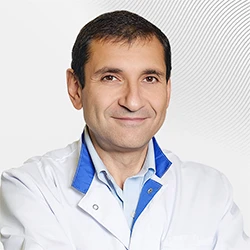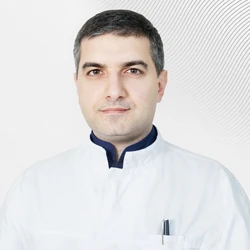Enamel hypoplasia and cervical caries in children: causes, symptoms, treatment
Enamel hypoplasia in children is manifested as a violation of the development of hard tissues of one or more teeth, both temporary and permanent. This disease is not carious.Hypoplasia is manifested by:
- non-uniform enamel color (from white or yellow to dark brown),
- changes in relief (depressions, grooves) are more common on the vestibular surface (facing the vestibule of the oral cavity).
Forms of hypoplasia
- Systemic, when groups of milk and permanent teeth are affected. The defect appears on the cutting edges of the incisors and on the tubercles of the chewing teeth. Most often, parents notice an unsightly appearance of teeth in children, and the child, in turn, may complain of pain in the upper and lower jaw when eating sweet or cold food.
- Local hypoplasia, in which one or more teeth are more often affected (a speck or depression appears on the enamel). The cause of the defect on the permanent tooth is an inflammatory process in the area of the roots of the baby tooth in the past, which affected the formation of the rudiment of the permanent tooth. That is why it is so important to take care of baby teeth and visit a pediatric dentist twice a year.
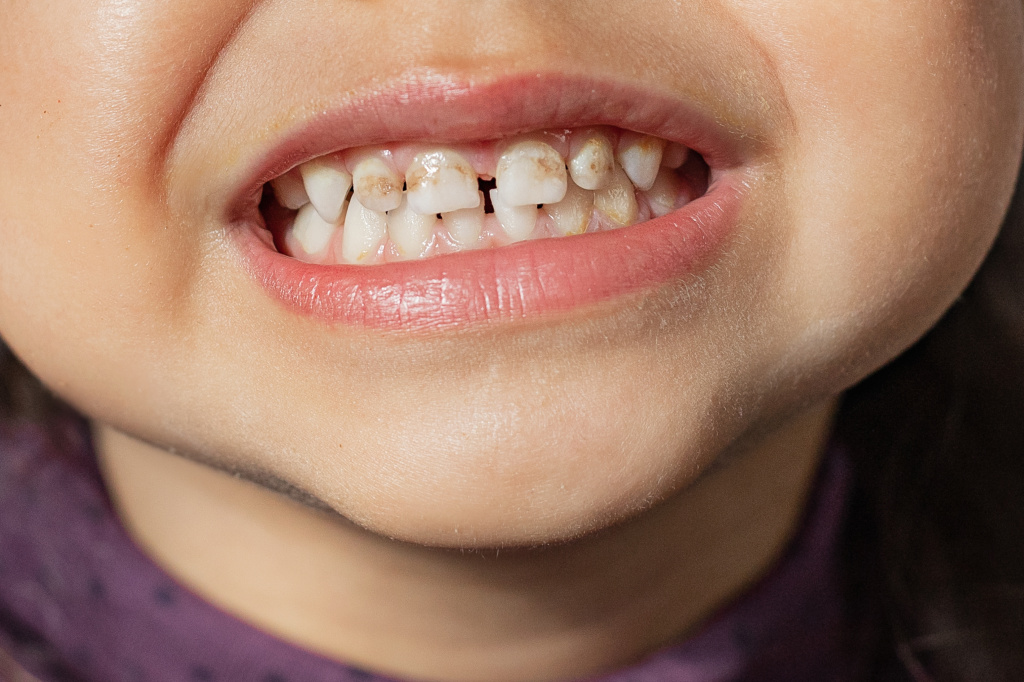
Causes of hypoplasia
The main reason for the development of hypoplasia on the teeth is a metabolic disorder at the time of the formation of the rudiments of teeth.
Pathological factors during intrauterine development include: Rhesus conflict between mother and child, toxicosis, infections (rubella, toxoplasmosis), taking antibiotics (tetracycline).Factors related to the child's diseases: Down syndrome, cerebral palsy and other CNS lesions; rickets and childhood infections (measles, scarlet fever), hypo- and vitamin deficiency.
Patients with hypoplasia are most susceptible to the development of caries and its complications, especially with poor oral hygiene. It is necessary to visit a pediatric dentist regularly for preventive examinations and professional oral hygiene, identify defects in time and treat them in a timely manner.
Methods of treatment of hypoplasia
- Restoration of the defect using composite material;
- For deeper and more extensive defects, restoration with a crown.
The most insidious process in children with a milky bite is the so-called neck or bottle caries. Circular caries, in scientific terms.
The main causes of cervical caries in children
- Poor oral hygiene. A large amount of soft plaque leads to a violation of the acid-base balance and demineralization (destruction) of the enamel occurs, as a result – the formation of a carious cavity.
- Prolonged breastfeeding or bottle feeding with formula and juices. All these products are characterized by a high concentration of fermentable carbohydrates, including sucrose, which leads to active bacterial reproduction. Vitamin A deficiency also leads to the development of circular caries in children, as the enamel becomes brittle and vulnerable to the effects of bacteria.
Symptoms of cervical caries
At the initial stages, cervical caries in children is asymptomatic. Further, as the disease progresses, symptoms such as enamel spots (yellow or brown), sensitivity when brushing teeth, and reactions to temperature and chemical stimuli appear. If symptoms appear, it is necessary to consult a dentist. During the examination, the doctor will determine the degree of disease activity, the number of affected teeth and the depth of the lesion, and suggest treatment options.
Depending on the degree of activity, cervical caries is divided into three types:
Compensated. Tooth damage occurs slowly, and examination reveals isolated enamel lesions. It is necessary to visit the dentist every 3 months and regularly remineralize (strengthen) the enamel at the reception and at home.
Subcompensated. Enamel lesions develop over several months. It is also necessary to regularly carry out hygiene and strengthen the enamel with fluorinated compounds. A single restoration of teeth with a composite material is possible, depending on the depth of the lesion.
Decompensated. Severe course, the carious process develops rapidly and spreads to neighboring teeth, is accompanied by acute pain and requires immediate treatment. Most often, with this type of lesion, dental treatment is performed under general anesthesia and the destroyed teeth are restored with crowns.
Cervical caries also develops on permanent teeth, especially during the eruption of the second molars. The reason is poor oral hygiene, an unbalanced diet, and the consumption of large amounts of carbohydrates. This process is detected during preventive examinations and, depending on the depth of the lesion, treatment is performed (restoration with composite material, fluoroapplication and).
and).
EMC pediatric dentists perform all types of treatment for hypoplasia and cervical caries in children. With large amounts of damage, treatment under anesthesia is possible. If the baby is still small or very afraid, we offer nitrous oxide therapy.
Questions and answers










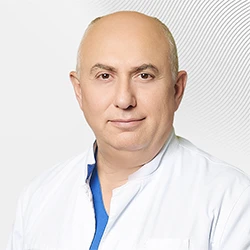


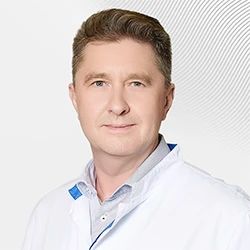


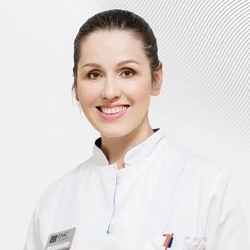

.webp)

.webp)
